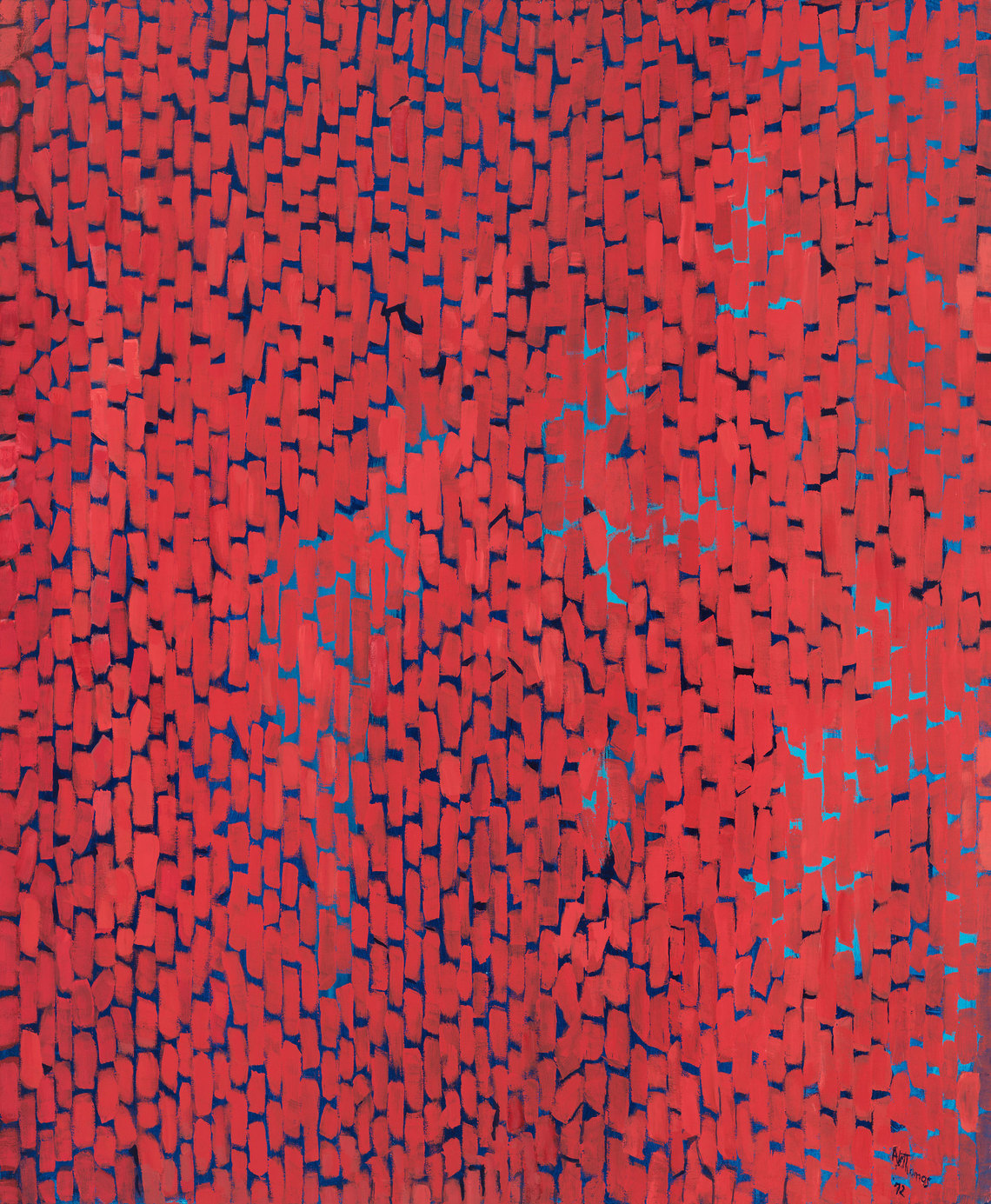
On July 14, an exhibition of works by the color field painter Alma Woodsey Thomas opened to the public at the Studio Museum in Harlem, and it will be on view until the end of October.
Thomas enjoyed enormous institutional success at the tail end of her life, which makes this presentation something of a second coming. The works, while familiar to many, are completely new to younger audiences. “No two people have the same reactions to her paintings,” the Studio Museum’s curator, Lauren Haynes, told artnet News in a phone conversation. “Some people are drawn in by the color, some by the composition.”
Alma Thomas at the opening of her Whitney Museum show in 1972. Courtesy Wikimedia Commons.
“She was very much a student of art history,” Haynes continued. “[She] would go into museums when she was able to, and [she] committed herself to her career after she retired. Her work was a product of all of these things—teaching being a part of that.”
On the occasion of Thomas’s birthday this September 22 (which, coincidentally, the artist shares with the Studio Museum’s director Thelma Golden), artnet News is taking a look at five aspects of her life that deserve renewed appreciation and celebration.
Alma Thomas, White Roses (1976). Courtesy Studio Museum in Harlem.
1. Thomas was the first student to graduate with a fine arts degree from Howard University.
In 1921, Thomas enrolled at Howard University to take up home economics, but switched courses after studying with painter James V. Herring—a professor she’d help found Barnett-Aden Gallery with two decades later in 1943. She instead emerged with a bachelor of science in fine arts in 1924, graduating from a program that, according to the Archives of American Art, Herring had just established.
Alma Thomas, Cherry Blossom Symphony (1973). Courtesy Studio Museum in Harlem.
2. She taught art to junior high school students for over three decades.
In 1924, Thomas went on to embark on a 35-year career providing an arts education to junior high school students in Washington D.C. As the National Museum of Women in the Arts notes, her work as a teacher “allowed her to support herself while pursuing her own painting part-time.” Retirement afforded Thomas the freedom to pursue her work as a painter, and it enabled her to produce the better portion of her works that she executed in her twilight years.
Alma Thomas, Scarlet Sage (1976). Courtesy Studio Museum in Harlem.
3. She had a late start in painting.
Thomas spent the better part of her twenties teaching at the kindergarten level in Washington DC, and it wouldn’t be until much later, during her thirties, that she seriously undertook artistic practice. Age, of course, was inconsequential to her. “Creative art is for all time and is therefore independent of time,” she said in a 1970 interview. “It is of all ages, of every land, and if by this we mean the creative spirit in man which produces a picture or a statue is common to the whole civilized world, independent of age, race and nationality; the statement may stand unchallenged.”
Alma Thomas, Carnival of Autumn Leaves (1973). Courtesy artnet Price Database.
4. She was deeply invested in a project of beauty.
Amid the challenges and discrimination that black women endure, Thomas turned the focus of her artistic output on creating canvases that dealt with beauty. As she said in an interview in 1970: “The use of color in my paintings is of paramount importance to me. Through color I have sought to concentrate on beauty and happiness, rather than on man’s inhumanity to man.”
Alma Thomas, Apollo 12 (1970). Courtesy Studio Museum in Harlem.
5. She was the first African-American woman to hold a solo exhibition at the Whitney Museum of American Art.
In 1972, Thomas claimed the spotlight with a full exhibition at the Whitney Museum—making history along the way. As a statement by Thomas in the Studio Museum’s gallery space reads: “One of the things we couldn’t do was go into museums, let alone think of hanging our pictures there. My, times have changed. Just look at me now.”
“Alma Thomas” is a solo exhibition of paintings and drawings at the Studio Museum in Harlem that runs through October 30, 2016.